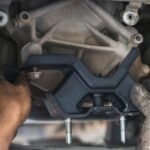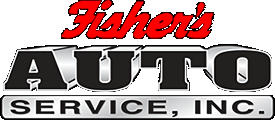Engine Mounts: Unsung Heroes Supporting Your Auto’s Engine

 While engine mounts may not be the most glamorous parts of your vehicle, they play a necessary role in keeping your engine secure and stable. These unsung heroes absorb vibrations, reduce noise, and prevent excessive movement. They are marvels at maintaining the overall integrity of your vehicle. This blog will explore the purpose of engine mounts (or motor mounts), what the rubber isolator does, and why engine mount failure happens over time.
While engine mounts may not be the most glamorous parts of your vehicle, they play a necessary role in keeping your engine secure and stable. These unsung heroes absorb vibrations, reduce noise, and prevent excessive movement. They are marvels at maintaining the overall integrity of your vehicle. This blog will explore the purpose of engine mounts (or motor mounts), what the rubber isolator does, and why engine mount failure happens over time.
The Purpose of Engine Mounts
Engine mounts support the motor and transmission’s weight, keeping them secured within the engine compartment. They consist of rubber isolators, bolts, and metal brackets to secure the engine to the walls of the engine compartment. Their primary functions include.
- Vibration Dampening: The engine creates vibrations during operation. The motor mounts absorb and dampen these vibrations. They prevent the vibrations from affecting the rest of the vehicle’s frame.
- Support and Stability: They secure the engine and transmission in their proper positions. They also keep the engine and transmission aligned with other critical drivetrain components. When functioning correctly, they ensure smooth power delivery and minimize stress on other engine-related parts.
- Prevent Excess Movement: Your vehicle’s engine and transmission are powerful and create considerable force. The engine mounts are designed to prevent those components from shifting position. Actions like starting & stopping the motor and shifting gears require constant stability.
Factors Of Engine Mount Wear
Like most auto components, engine mounts are subject to wear and tear. Over time, the rubber isolator deteriorates, and the metal brackets weaken. The motor mounts can crack, break, or collapse without routine maintenance. Here are factors that contribute to engine mount wear.
- Normal Wear and Tear: The motor mounts are exposed to extreme heat, engine fluids, and constant vibrations. These exposures can deteriorate the rubber component, causing it to lose elasticity. As a result, it absorbs vibrations less effectively.
- Overloading or Excessive Torque: If you frequently tow heavy loads or drive in harsh conditions, the mounts may experience additional stress. Excessive torque from aggressive acceleration or abrupt gear changes can also create strain, causing them to wear out more quickly.
- Age and Mileage: The lifespan of engine mounts can vary depending on the vehicle and driving conditions. Generally, they can last anywhere from 5 to 10 years or more, depending on usage. Higher mileage and aggressive driving can contribute to accelerated wear and eventual failure.
- Environmental Factors: Environmental contaminants like ice melt salts, dirt, and road debris can adversely affect the motor mount’s integrity. Extreme weather can also contribute to premature wear. These factors can accelerate the rubber components’ breakdown, hastening the mount’s deterioration.
- Auto Collision: The unusual stresses and abrupt movements of even a minor traffic accident can be enough to crack a motor mount.
Signs of Engine Mount Failure
Several signs indicate that your engine mounts may have failed or are nearing the end of their lifespan:
- Excessive Engine Movement: Excessive engine movement or rocking when starting the vehicle, accelerating, or shifting gears.
- Unusual Vibrations and Noises: Increased vibrations and noticeable engine noise inside the cabin. You may experience a rough idle or significant vibrations while driving, especially during acceleration.
- Visible Damage or Wear: A visual inspection of the engine mounts can provide insight into their condition. Look for cracks or tears in the rubber components. Check for engine tilting and sagging. Signs of oil leakage may indicate that one or more engine mounts have failed or are deteriorating.
- Drivetrain Misalignment: Check that your drivetrain components, such as the driveshaft, are not misaligned or rubbing against other undercarriage components. Additionally, noisy or rough gear shifting could indicate engine mount failure.
Schedule Engine Mount Inspection
Motor mounts are necessary to maintain your vehicle’s stability, reduce vibrations, and ensure a comfortable driving experience. If you suspect engine mount failure, schedule an inspection with a qualified mechanic. Replacing damaged mounts with high-quality OEM (Original Equipment Manufacturer) parts can restore engine stability, reduce vibrations, and ensure your vehicle’s drivetrain operates as intended.
Best Auto Repair in Kirkland, WA
Regularly scheduled maintenance can help identify early signs of motor mount wear and prevent additional damage. From diagnosis to repairs and replacements, Fisher’s Auto Service, Inc. provides the highest standard of service.
Make An Engine Mount Appointment
We can’t wait to hear from you. Let our certified technicians get your auto running great again. Call us at (425) 441-3327 or visit our website to schedule an engine mount inspection & replacement today!
Posted in: Diagnosis
Leave a Comment (0) ↓


